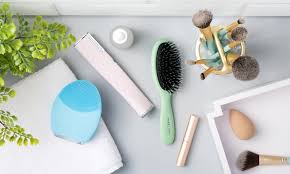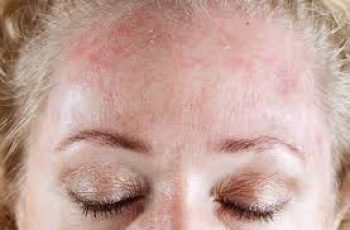
10 Cutting-Edge Skin-Care Devices You Can Use at Home
Beauty trends come and go. Some are fun, others helpful, and a few even risky. But one shift is here to stay: the rise of high-tech home skin-care tools rooted in science.
More people now understand that healthy skin reflects total wellness. Skincare is no longer just about beauty — it’s part of overall health and self-care.
Thanks to innovation in dermatology and technology, new at-home devices are transforming how we care for our skin. They’re smart, science-backed, and user-friendly.
These gadgets let you personalize your skincare routine at home, targeting specific issues like acne, wrinkles, and hyperpigmentation.
According to P&S Intelligence, the skin-care device market is booming. It’s expected to jump from $9.5 million in 2019 to $28.2 million by 2030.
This surge in demand shows how serious consumers are about DIY skincare that works. These aren’t gimmicks — many are supported by research and dermatologists.
Personalized skincare matters. As Dr. Nazanin Saedi notes, skin type goes beyond dry or oily. Factors like tone, pigmentation, and sensitivity should all be considered.
Still, not all tools match the strength of medical-grade devices used by professionals. As Dr. Rachel Nazarian points out, the effects may be milder at home.
But that doesn’t make them useless. Dr. Joshua Zeichner says these tools can be great for people between treatments or those without easy access to a dermatologist.
Ready to explore the best in home skincare? Here are 10 top devices dermatologists say are worth considering for at-home use.
1. Dermaflash Luxe+ Dermaplaning Device
Dermaplaning removes dead skin and fine hairs using a small blade. In-office, it’s done with precision. At home, devices like Dermaflash Luxe+ make it easier.
This tool resembles a slim electric toothbrush with a curved handle. After cleansing, you gently glide it across your face to exfoliate and remove peach fuzz.
Dermaplaning boosts skin smoothness and helps products absorb better. Dr. Nazarian says it can make skin look more youthful and radiant.
But be aware: shaved hairs may grow back looking thicker. This is due to the way they’re cut, not because they actually become thicker.
If you have acne, rosacea, or sensitive skin, check with a dermatologist first. Always moisturize after use to soothe potential irritation.
2. Opte Precision Skincare System
Opte uses inkjet printing and LED scanning to detect and correct spots like hyperpigmentation. It deposits a tinted serum precisely on each area.
It combines blue LED lights and a digital camera to scan the skin. Then it applies serum with 5% niacinamide only where needed, helping to reduce waste.
Over time, targeted treatment may help fade dark spots. According to P&G, 90% of users saw clearer, younger-looking skin in four weeks.
It’s most effective on small, flat spots. Raised areas, textured blemishes, or moles may require professional care.
Dr. Zeichner says it’s ideal for early signs of aging. Larger spots may still need laser treatment for best results.
3. Nurse Jamie Uplift Massaging Beauty Roller
This hand-held massager features 24 tourmaline stones and promises to boost circulation and reduce puffiness.
Dr. Nazarian says the device enhances lymphatic drainage. This may reduce swelling, especially around the eyes and jawline.
Some users say it helps relieve tension and signs of “tech neck” — stiffness from long hours at a computer or phone.
Scientific evidence is limited, but it’s generally safe. Avoid it if you have skin conditions like dermatographism or pressure urticaria.
Manage your expectations. It’s soothing and refreshing, but don’t expect dramatic results from this basic massaging tool alone.
4. NuFace NuBody Skin-Toning Device
This sleek tool uses gentle microcurrents to tone and firm skin on areas like the thighs, arms, and stomach.
Dr. Nazarian says microcurrent devices may help with early sagging and fine lines. Some studies suggest they improve collagen production.
A small study showed 70% of women saw benefits after using microcurrents for a month. But results were limited, and more research is needed.
Dr. Zeichner recommends it for younger skin as a preventative or early-treatment option. For advanced sagging, in-office procedures are better.
Avoid this device if you have implants or pacemakers, as electrical currents may interfere with them.
5. SkinCeuticals D.O.S.E. Personalized Serum Creator
This is not a tool you buy — it’s a service. You visit a dermatologist, who uses the D.O.S.E. system to create a custom serum.
After a quick evaluation, your doctor chooses ingredients based on your needs. A lab-style machine then mixes your personalized formula.
It’s tailored for issues like dryness, pigmentation, or fine lines. The serum stays effective for about three months, after which you can reassess.
Dr. Zeichner says it’s ideal for people who feel their current products aren’t working. It’s like hiring a personal trainer — but for your skin.
Just note: it’s pricey and requires professional involvement. But it may be worth it for long-term, customized care.
6. BeautyBio GloPro Facial Microneedling Tool
Microneedling helps stimulate collagen by creating tiny punctures in the skin. GloPro adds red light to the treatment for added effect.
Dr. Shainhouse explains that microneedling boosts collagen production, which naturally decreases as we age. This can smooth texture and reduce fine lines.
Microneedling can improve firmness and help products penetrate better. But use caution — always clean your face before using to avoid “tattooing” dirt or makeup.
Avoid use if you have acne, rosacea, psoriasis, or any open wounds. At-home needles are shorter than those in clinics but can still irritate sensitive skin.
Use it weekly or biweekly. While results are mild compared to professional microneedling, consistent use can show gradual improvement.
7. LightStim for Acne
This FDA-cleared LED device combines red and blue light to target acne. Blue light kills bacteria, while red light reduces inflammation.
Dr. Zeichner says it works well for mild acne, such as blackheads or whiteheads. But for cystic or severe acne, see a dermatologist.
Some studies show prolonged blue light exposure may age skin. Animal research raised concerns, though human studies are still needed.
This device is best used as a supplement to your acne routine, not a sole treatment. It’s low-risk, but don’t expect miracles if you have serious breakouts.
8. HiSkin by HiMirror
HiSkin pairs with a smart mirror to analyze your skin using sensors and biofeedback. It scans for hydration, texture, and pigmentation.
The mirror displays a full skin report after scanning your forehead, cheeks, eyes, and chin. It then suggests products tailored to each zone.
Dr. Saedi compares it to a virtual consult. It offers ongoing monitoring to adjust products as your skin changes.
Dr. Zeichner adds that tech like this is a helpful guide, especially when tracking long-term progress from home treatments.
This is a great tool for those who like data-driven decisions and enjoy customizing their routines based on real-time feedback.
9. PMD Beauty Personal Microderm Classic
This at-home microdermabrasion device uses spinning aluminum oxide discs to exfoliate the skin and suction to boost circulation.
The goal is to remove dead cells, speed up renewal, and improve skin brightness. It’s gentle enough for weekly use but still effective.
Microdermabrasion can also help products absorb better. One study found it helped smooth skin and reduce acne without worsening pigmentation.
However, it’s not for everyone. Dr. Nazarian warns those with rosacea or melasma may experience irritation or worsened pigmentation.
Used correctly, it can improve radiance and softness. But results may be more subtle compared to professional treatments.
10. Foreo Luna 3
This Bluetooth-enabled silicone brush uses sonic pulses to clean and massage the face. It’s designed to gently exfoliate while boosting circulation.
The Luna 3 connects to an app that guides you through a 60-second cleansing session. The bristles help remove dirt, oil, and makeup effectively.
Dr. Zeichner says the massaging function may promote oxygen delivery to the skin, enhancing that post-cleanse glow.
It’s safe for all skin types and less abrasive than traditional exfoliators. But don’t expect dramatic results if your skin is already healthy.
Think of it as a luxurious tool that upgrades your daily routine rather than transforms it.
Final Thoughts
High-tech skin-care tools are more accessible than ever. They offer convenience, customization, and real results — when used properly.
Still, not every tool is right for every person. Always consider your skin type, goals, and possible sensitivities before trying a new device.
When in doubt, consult a dermatologist. They can help you decide which gadgets fit best into your unique skincare journey.
Remember, consistency is key. Whether you use these devices weekly or daily, they work best when you stick with them.
Home skincare has never been smarter — or more exciting.


